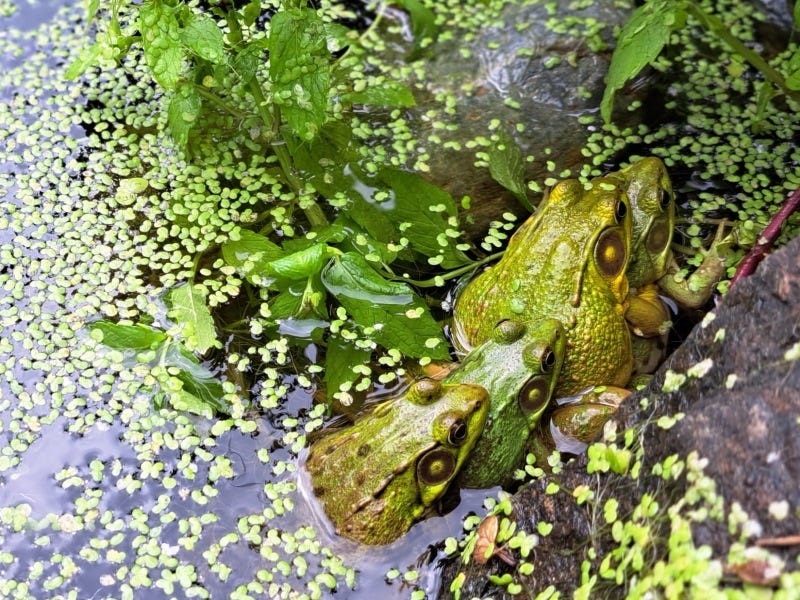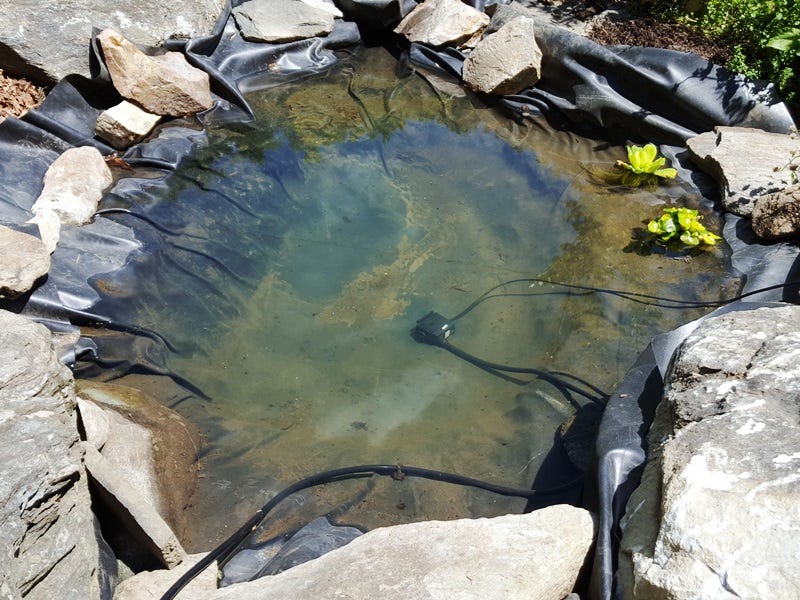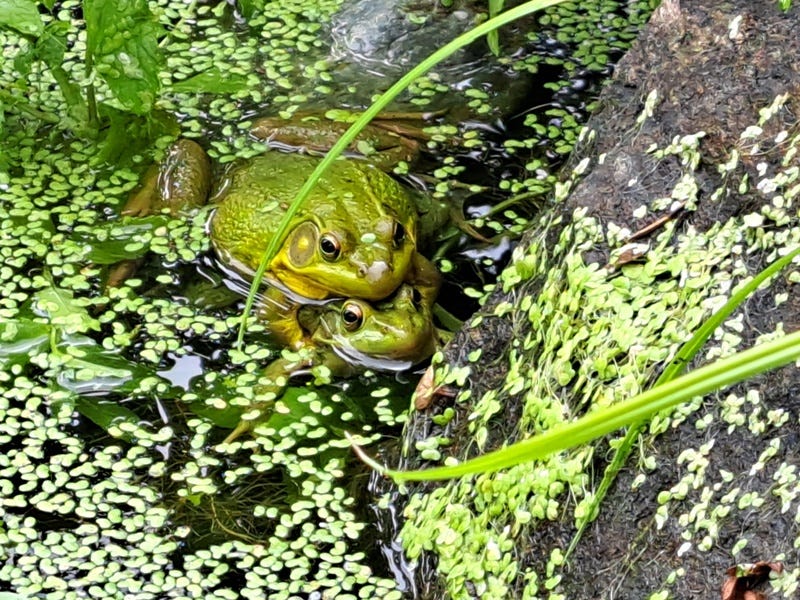The story of a very small pond
I had no idea how much joy my 2020 project would bring or that it would teach me, at long last, to pay attention to the natural world
It was during the COVID-19 lockdown that I started to pay real attention to nature, and somehow this seems an analog activity, too.
Given that I’ve written about environmental issues since 1989, I realize this should be couched as a confession. Loving nature in the abstract instead of nature truly known - probably all too common.
Admittedly, there wasn’t as much nature at hand in the Silicon Valley or London or New York as there is here in Great Barrington. I live in a well-established neighborhood, but it’s only a 5-minute walk to a lake and there are woodlands all around. And in our little stretch of the Berkshire hills, there is the remnant of a spring that used to turn into a stream flowing across my half-acre.
Doctor Hassett told me about the stream soon after we bought the house. He’d played there as a boy, and his story let me see the way the water still flowed, in heavy rain, down a certain slope and then along the street. When we had landscaping done by a talented but irascible local fellow who boasted of his Rome Prize, he brought in a huge pile of boulders to suggest that lost stream.
And one spot started to fill with water in the spring. It didn’t last, though, so I then tried a natural approach, getting bags of bentonite clay (similar to cat litter) to mix with the soil.
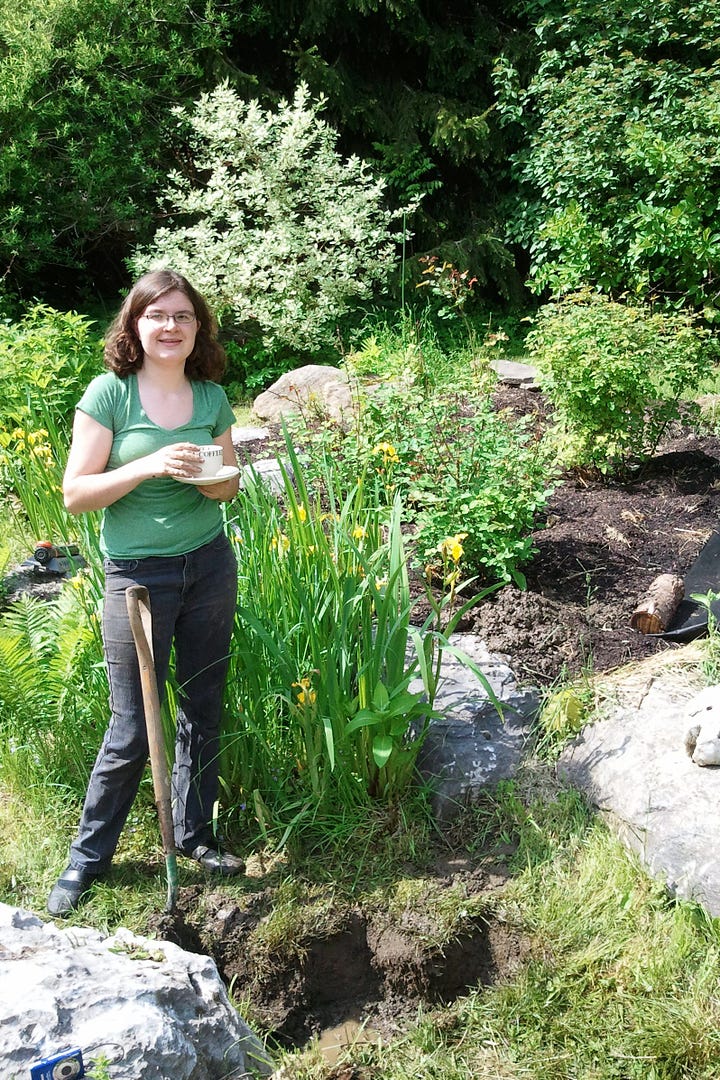
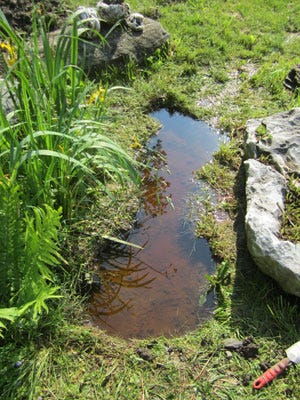
That didn’t work, either, once it really got warm. A frog or two would start to settle in, and next thing they knew their little lake was drying up. Off they would go, in search of better digs.
I read up on water gardens and ordered pond lining materials and a pump.
They sat in the barn for over 5 years, until the spring of 2020, when I was suddenly stuck in Great Barrington. And so were other people. Fortunately, I’d already found a guy with a machine to dig out the pond area and shift some boulders around. My daughter Rachel had been sent home from law school in Washington DC for what turned out to be a year and a half of remote learning. She and a young man in the neighborhood to help me lay the padding and rubber liner. Then I had a couple of weeks of heavy labor, moving rocks from other parts of the garden - this is New England, and I discovered that there are always rocks if you look for them - to hide the edge of the liner and, I hope, make the pond look as though it had always been there. (I used a handcart to move the big stones.)
After filling the pond, I ordered a few plants, including a hardy yellow water lily. It bloomed magnificently, but it was purple (see below). They’d accidentally sent a tropical lily, meant for a much milder climate than ours, but it was so beautiful that I never looked back, and a new Lindsey Woods is blooming this year.
While initially the pond was mostly about aesthetics, tending it has made me pay attention to nature in a way no academic course or book or video could have. And little classroom displays just aren’t the same: Watching life in the wild, even this modest and sheltered wild, is a different experience.
I now understand how people get so attached to the places and creatures they study. When one of the frogs was injured, I fed her worms for several days and became quite popular with the other frogs, too. When I sit by the pond - one of the boulders provides a perfect seat for reading and observing - some of them swim over to see me. I’ve learned that frogs don’t mind having their backs stroked, as you can see here.
Click for videos from the pond: Green Frog Lives & Loves. Highlights are linked in this post.
The frogs arrived as soon as there was water, but it’s over time that they have made this their home. This year we have tiny new frogs that were spawned in 2021, which means they survived 2 winters under the ice and snow. Every year I see new insects, skating and diving and swimming as larvae. The infant dragonflies are apparently fierce. And, yes, I do have to watch out for mosquito larvae. I routinely dose the pond and the lotus tubs with Mosquito Bits, fungal granules harmless to frogs.
The duckweed appeared in 2021. Some strands sink when it gets cold, coming to the surface again in spring. It makes an emerald carpet over the surface of the pond and keeps algae from growing. I net it out when it gets too dense and use it as mulch. Its root system creates a frog float, so they can hang out and, if male, display their fine physiques. There are many shady nooks at the edge, and I fortunately laid the rocks in a way that gives easy access to the planted areas around the pond where they hunt for bugs.
The highlight of 2023 was the frog orgy on the 4th of July - quite a celebration! I managed to get a video of the preliminaries.
The 2 pairs then settled down to business (photo at top), and in an hour or so (leaving them some privacy) I found a patch of black frog spawn.
Then there are the tree frogs. I don’t know exactly how small a pond can be and still evolve as an ecosystem. But I have two big black plastic tubs on my deck - weathered and almost mud-colored - that now have hundreds of tiny tree frog tadpoles swimming around, under the duckweed and around the lotus stems. (The tubs are actually for Chinese lotus, which are just getting started.) I recorded them one evening - you can hear them calling back and forth on this audio lip. The next morning I spotted the eggs as I was eating breakfast. The tadpoles appeared after 5 days and will apparently go through their metamorphosis in a couple of weeks, which is a bit terrifying.
The tubs, too, now have pond insects, and I think if I were ever to live in a city again, with some outdoor space and reasonably near a body of water, I would have a little water garden.
And other changes are afoot. I wanted to experiment with rain garden techniques - capturing rain water rather than let it run off into drains - and a friend suggested a French drain to take water that was running under the deck into the pond instead. This creates a flow during storms and keeps the pond fresh. So far, so good, as far as the frogs are concerned.
Finally, I can’t resist sharing this clip of the largest male, who is quite a showman.




